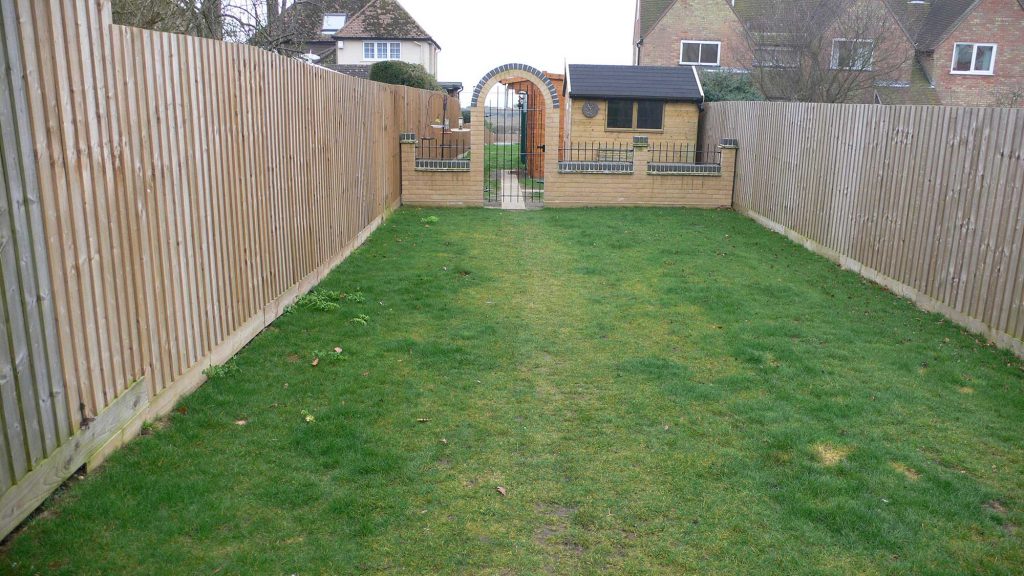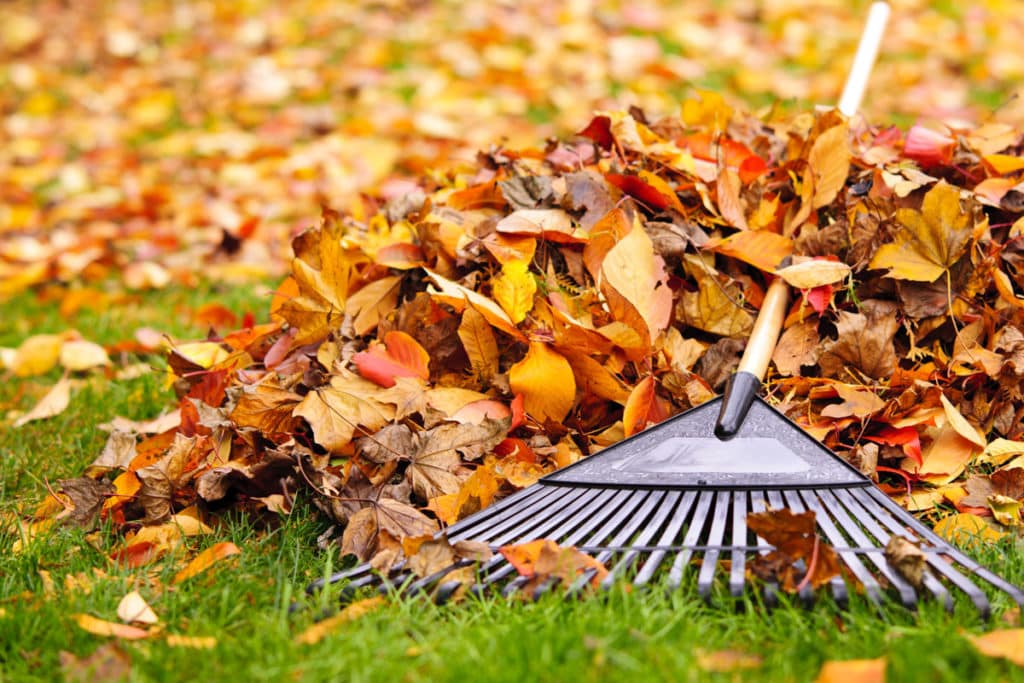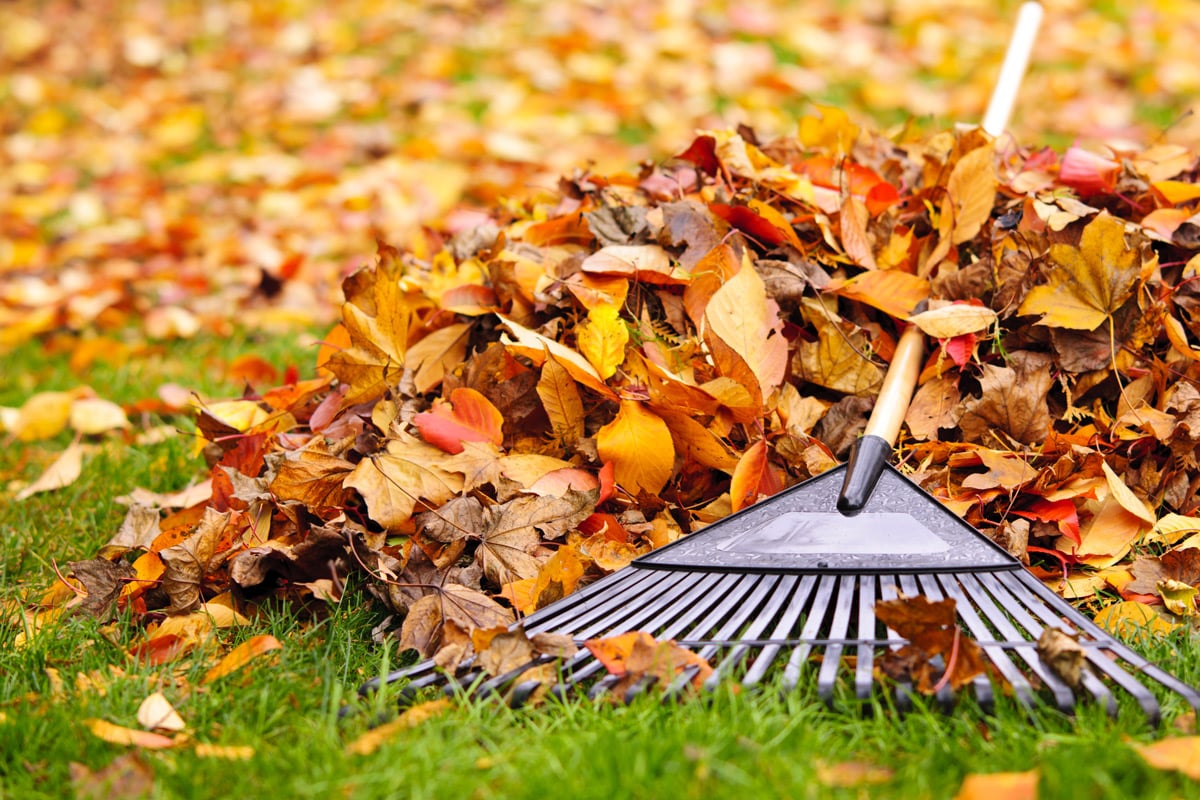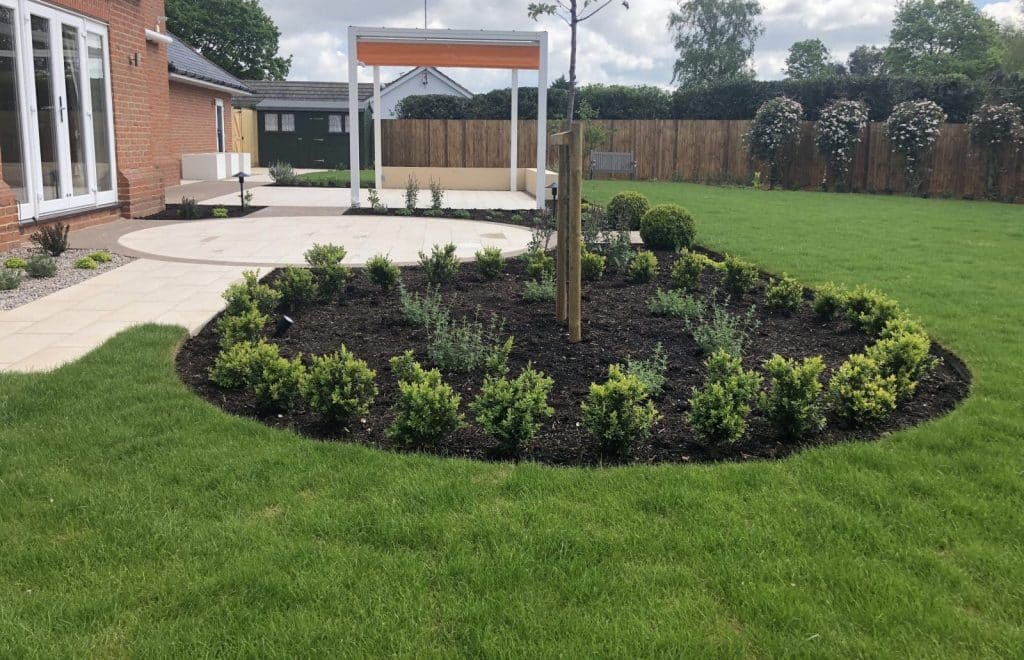18 Sep Autumn Lawncare: Keeping your lawn in tip top condition
If your lawn is in poor condition, it reflects on the whole garden. In this blog we’re looking at autumn lawncare jobs that will strengthen and repair and revive a tired lawn.
A healthy lawn has so many benefits. It’s an intrinsic part of garden design that lends continuity to a garden. Your lawn is also important for drainage, for leisure and for the environment. An unhealthy lawn however is an eyesore. It can de-value your property and discourage you from using the garden. Autumn lawncare jobs are all about giving your lawn the best possible growing conditions so that it contines to deliver all of those wonderful benefits.
A healthy lawn is an asset to a property for all 12 months of the year.
If you were to pick up a lawncare book it will list a whole lot of jobs for autumn time. Some of which seem unnecessary and look like hard work. You’ll probably lose heart, put the book back on the shelf and do nothing. This blog is not about me rewriting that book. It’s about helping you to assess the condition of your lawn and decide which of those autumn lawncare jobs really do need to be done.
Assessing your lawns condition
You will need
- Leaf blower (or rake)
- Edge trimmer
- Lawn mower with grass box
- Digital camera or smartphone
- Pen and paper
- An upstairs window with a view of the lawn OR a sturdy stepladder
- Screwdriver with a 15cm blade
- Springtine rake
First clear everything off the lawn. Furniture, toys, tools, pools – everything. Now get rid of any autumn leaves that have fallen onto the lawn.
Trim the edges of the lawn and mow it to around 2 cm. In other words, short but not scalped. If you can, try to mow with a push mower so that you can take notice of what’s beneath your feet.
Now that there are no distractions you can get a good overview of the health of your lawn.

Viewing your lawn from a height makes it easier to see where problems lie.
Overall health
Get yourself up high so that you can look down on the lawn. If you’re a technology fan, a camera mounted on a drone is ideal. If not, look out of an upstairs window or stand up on your stepladder.
What colour is your lawn? Is it a verdant green or does it look slightly pale and yellowish? Is the colour reasonably even? Look for large discoloured areas that might indicate either a problem with drainage or a pest infestation.
Now look for smaller discoloured areas. Are these weeds? moss? pet pee? Autumn lawn diseases? Bare patches?
Draw yourself a sketch map showing areas of concern. I like to take pictures too – so that I can refer back to them in a couple of months-time to see whether treatments are working.
Try to assess the percentage coverage of grass. In an ideal world it would be 100% grass. No weeds, no baldy bits, no scars. Realistically, at the end of a very hot summer and on the clay soils of Essex and Suffolk, it will be less.
Soil compaction
Lawncare books put a lot of emphasis on aeration and for good reason. Aeration improves drainage and it relieves soil compaction. Thus allowing the roots which keep the plant alive to really thrive. You can see in the picture above that where the lawn has been walked on most often, the grass plants are paler in colour and have bigger gaps between them. Grass paths really do benefit from regular aeration.
The next part of your lawn assessment is all about soil compaction.
Draw an imaginary letter “W” on your lawn. You’re going to look at 9 test spots. One on each of the points of the W and one roughly half way along each of the lines. No need to be too precise but this does give you a good representation of the whole lawn.
Take your screwdriver and push it into the lawn as far as it will go. The pressure you need to put on the screwdriver to drive it into the soil will be an indication of how compacted your soil is.
On a scale of 1-10 where 1 is like pushing the screwdriver into water and 10 is like driving it into solid concrete. How much pressure did you use at each point?
- Between 1 and 3 – the soil is far too loose and sloppy to support strong grass growth. Do you have a problem with drainage in this area? What could you see when you took an overview of the lawn?
- 3-4 – not ideal but could just be down to today’s weather conditions
- 5-7 – perfect. The soil is firm but not solid. Aeration would help keep the soil in good heart.
- 8-10 – oh dear. That’s quite compacted and needs addressing if you want your lawn to look good next spring
Moss and thatch
Moss is easy to recognise, it’s been the scourge of lawn lovers for decades if not centuries. Thatch is that layer of dead grass and moss that sits between the soil and the grass blades.
Besides being unattractive, Moss and thatch in a lawn have a tendency to slow down the passage of water and air into the soil. Over time that impacts on the health of the grass and the density of the sward. Thatch also tends to harbour spores of fungal lawn diseases.
Take your springtine rake and this time we’re going to make an assessment in the centre of the lawn and at each corner. Take a square of lawn around 50cm x 50cm and rake it as hard as you can for about a minute. You should be able to see bare soil. How much debris did you remove?

This poor lawn is absolutely choked with moss and othe debris. It desperately needs scarifying so that the grass plants can thrive.
Just a handful – nice work, your turf is not too congested in this spot
A bucketful – hardly surprising considering the summer we’ve just had. I’d recommend a light scarification over the whole lawn while the weather is still warm
A bin bag full and now there’s just a patch of soil. I’m afraid you’ve got some work to do. This lawn needs help – and fast
Weeds
Everyone gets weeds in their lawn from time to time. The art of lawn care is to encourage the grass to grow thick and strong so that weed seeds can’t find enough bare soil to germinate in.
If your lawn is more than 50% weeds and/or moss you might find it more cost effective to re-turf than to try to tackle them with herbicides.
Your list of autumn lawncare jobs
Based on your assessment of your lawns condition. Here are my suggestions for autumn lawncare jobs.
1: Feeding
Absolutely essential unless you have decided to replace the lawn. Apply an autumn-winter formulation though. Spring-summer lawn feeds are too rich for this time of year and will promote weak growth that is prone to disease. This lawn feed from Turfonline is ideal. It’s been developed by a turf grower, it’s easy to apply and has just the right balance of nutrients.
If you are going to scarify and/or aerate your lawn, do that before feeding.
2: Mowing
Keep mowing once or twice a week while the grass is still growing. 2.5 – 3cm is a good length for a hardwearing lawn.
3: Scarification
If your assessment showed that you have moderate amounts of thatch or moss in your lawn, scarification is going to help the plants to breath and to thicken up the sward for next season. If you have plenty of time and bags of energy, use a springtine rake. Otherwise you can hire or buy a mechanical scarifier.
You may find your lawn looks a bit bare and bedraggled after scarifying. Finish all of your lawn renovation jobs and then overseed to help thicken the sward.
4: Aeration
If your lawn is more than 2 years old and has never been aerated I would seriously recommend it. Especially if your lawn is growing on clay soil. There are a lot of good things to say about clay soil but it does need careful management if you are going to get the best out of anything growing in it. That means attending to drainage and compaction.
More about lawn aeration (this particular blog is about spring aeration, however the principals and the techniques are the same as for autumn renovations)
For major compaction, aerate twice a year. It will take a few seasons to really alleviate the problem though. In all honesty, it would be quicker to lift the lawn, prepare and improve the soil and lay fresh turf.
5: Clearing debris

Good air flow and plenty of light is important for autumn lawns. Damp still air tends to encourage lawn diseases while low light conditions mean plants struggle to make energy food from sunlight.
Avoid leaving toys and tools on the lawn overnight and be sure to clear up those autumn leaves at least every other day.
Does your lawn need a complete overhaul?
If you are unhappy with the state of your lawn and you need it fixed quickly, I would recommend a complete re-turf. The soil will be rotovated to relieve any compaction, any drainage issues can be addressed and your lovely new turf will be neat, evenly coloured, weed free and very beautiful.
Returfing is not as costly as you might imagine and if you are planning to host a garden party next year or to put your house on the market – returfing will certainly create the right impression.
Give me a call to discuss the best way forward
You may also like
For lawncare blogs, take a look at Robbie Lynn’s website PremierlawnsNI.co.uk. Robbie is an expert at renovating and maintaining lawns. Sadly he’s not local to Holland Landscapes but most of his lawns are on clay soils. I find his blogs are really helpful and informative.
Understanding soil types – when you know what’s under your lawn you’ll find lawncare a little more logical
Adding value to your property – simple landscaping ideas to improve kerb appeal





Sorry, the comment form is closed at this time.